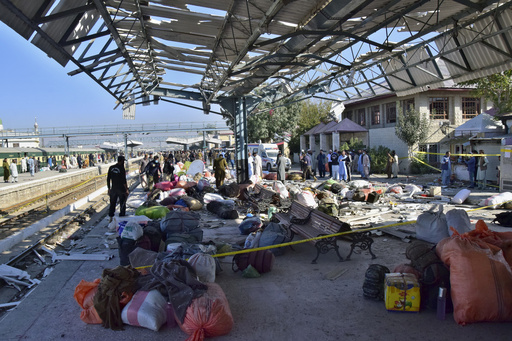
ISLAMABAD — A Baloch separatist organization has emerged as a serious challenge to Pakistan’s national security, comparable to the threat posed by the Pakistani Taliban, as indicated by a recent report from a think tank.
In the previous month, the Baloch Liberation Army (BLA) was responsible for numerous fatalities in the troubled region of Balochistan, located in southwestern Pakistan. Among these incidents, a suicide bombing at a train station in Quetta stood out as particularly deadly.
The BLA advocates for independence from the central government, which has initiated an operation to counter armed groups operating within the province.
A report released last Thursday by the Pakistan Institute for Peace Studies highlighted the alarming increase in both the number and intensity of BLA attacks, suggesting a considerable shift in the group’s operational methods and capabilities. This evolution necessitates a reassessment of the government’s strategies to combat the threat.
According to the report, there were a total of 61 terrorist incidents in November, reflecting a 27% rise compared to the previous month. The fatalities surged from 100 in October to 169 in November. The BLA was accountable for 12 attacks last month, resulting in 45 deaths—more than the casualties caused by the Pakistani Taliban during the same period.
A research analyst from the institute, Safdar Sial, noted that the BLA has been adapting tactics learned from the Pakistani Taliban. While there is no shared ideological foundation between the two groups, the BLA has effectively targeted soft targets, resulting in significant casualty figures by utilizing suicide bombers.
“This is not the same BLA as four or five years ago,” Sial commented. “They are executing tactical assaults. The nature of their targets and their methods have transformed. The government will find it challenging to address the sophisticated threat that has emerged.”
Balochistan, Pakistan’s largest province, is also its least populated, serving as a central area for the ethnic Baloch minority, who often express grievances about perceived discrimination from the state. The province faces serious issues, including forced disappearances, extrajudicial killings, and the exploitation of its abundant natural resources, which locals feel the government prioritizes over their welfare.
Rights advocates report that individuals demanding equitable resource distribution frequently vanish after being taken into custody by security forces.
The BLA has gained local support in Balochistan by aligning itself with the public’s concerns about forced disappearances and state exploitation. According to Sial, the group’s messaging portrays the victims of their attacks as government supporters or as individuals from the eastern Punjab province.
The BLA’s campaigns have increasingly targeted residents from eastern Pakistan, part of their broader initiative to remove outsiders from Balochistan, which borders Iran.
Sial emphasized that for the government to effectively counter the BLA’s influence, it must strive to earn the “hearts and minds” of the people in Balochistan, particularly as the BLA seeks to recruit younger individuals.
No representatives from the provincial government were available to respond to the report. However, Jan Achakzai, a former information minister for Balochistan, noted that state actions have diminished the BLA’s capability to attack critical infrastructure and military sites, forcing the group to shift focus towards softer targets.
He characterized the BLA as a tactical threat while viewing the Pakistani Taliban as a strategic danger, with intentions to overthrow the government and impose their version of Islamic law.
Despite lacking the same scale and external backing as the Pakistani Taliban, Achakzai asserted that the BLA has grown increasingly bold and ruthless, capturing public attention with its actions. “The recent attack occurred in an open space, a railway station devoid of security. Civilians were present. The BLA appears on busy highways that are difficult to secure,” he explained.
